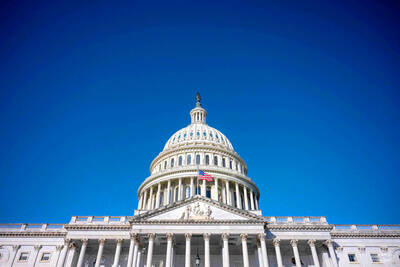As caution creeps back into Wall Street, investors have pulled back to consolidate recent hefty gains amid questions about whether stocks have hit their peak for this year.
Losses in the past week came after a historic rally of some 50 percent for the broad market, but also amid jitters about the “September effect,” reflecting a historical trend of a weak period and last year’s market calamity in September.
Going into the US Labor Day holiday weekend, the blue-chip Dow Jones Industrial Average fell 1.18 percent for the week to end at 9.441.27.
The technology-heavy NASDAQ composite dipped 0.49 percent to 2,018.78 and the broad-market Standard & Poor’s 500 index pulled back 1.22 percent to 1,016.40.
With the broad market still up around 50 percent from lows in early March, some analysts argue that stocks have risen too far too fast over the past six months.
David Rosenberg, chief economist and strategist at Gluskin Sheff & Associates, said the market appears to be entering a new phase, having shifted its view from a contracting economy to one that is growing again.
“For months, the equity market had this uncanny ability to rally on any good news, as the psychology took hold that less-negative data was a positive,” Rosenberg said.
“But having gone from pricing in a drop of 2.5 percent in real GDP at the lows to a rise of 4.0 percent now, it looks like Mr Market is becoming a little more discerning in terms of interpreting the economic data,” he said.
Doug Kass at Seabreeze Partners recently argued that stocks had hit their highs for the year in late August, saying that the bull market was “in complacency,” as “optimism and a boisterous enthusiasm reigns.”
But others contend that the market, which remains more than 30 percent below peaks of 2007, can resume its upward track after a pause to consolidate.
Fred Dickson, chief market strategist at DA Davidson & Co, said he expects the S&P index to gain another 5 percent this year amid an improving economy.
“Over the next three months we are looking for the stock market to experience a series of minor rallies followed by short, shallow dips as investors continue to look for even slight pullbacks to raise equity exposure,” he said.
The market struggled to interpret the past week’s biggest economic news, showing a loss of 216,000 jobs as the US unemployment rate hit a fresh 26-year high of 9.7 percent.
While this was better than expected and showed some healing in the economy, it failed to inspire confidence in a strong economic rebound.
“All indications are that US real GDP growth will turn positive again during the third quarter of this year, but the recession lives on in the labor market,” Meny Grauman at CIBC World Markets said.
Brian Wesbury at First Trust Portfolios said the data suggests the economy is quickly gaining momentum after a brutal recession.
Dean Maki at Barclays Capital also sees an economy that will surprise to the upside.
“The economic data continue to reinforce our forecast of a solid recovery, pointing to robust growth in manufacturing output, housing, and real exports, and we expect these forces to propel a substantial rebound in growth over the next year,” he said.
Bonds were mixed for the week. The yield on the 10-year Treasury bonds fell to 3.442 percent Friday from 3.451 percent a week earlier and that on the 30-year bond rose to 4.273 percent from 4.208 percent. Bond yields and prices move in opposite directions.
The economic calendar is light in the holiday-shortened week opening on Tuesday. The market will receive the Federal Reserve Beige Book survey on the US economy and data on the US trade balance.

NEXT GENERATION: The four plants in the Central Taiwan Science Park, designated Fab 25, would consist of four 1.4-nanometer wafer manufacturing plants, TSMC said Taiwan Semiconductor Manufacturing Co (TSMC, 台積電) plans to begin construction of four new plants later this year, with the aim to officially launch production of 2-nanometer semiconductor wafers by late 2028, Central Taiwan Science Park Bureau director-general Hsu Maw-shin (許茂新) said. Hsu made the announcement at an event on Friday evening celebrating the Central Taiwan Science Park’s 22nd anniversary. The second phase of the park’s expansion would commence with the initial construction of water detention ponds and other structures aimed at soil and water conservation, Hsu said. TSMC has officially leased the land, with the Central Taiwan Science Park having handed over the

AUKUS: The Australian Ambassador to the US said his country is working with the Pentagon and he is confident that submarine issues will be resolved Australian Ambassador to the US Kevin Rudd on Friday said that if Taiwan were to fall to China’s occupation, it would unleash China’s military capacities and capabilities more broadly. He also said his country is working with the Pentagon on the US Department of Defense’s review of the AUKUS submarine project and is confident that all issues raised will be resolved. Rudd, who served as Australian prime minister from 2007 to 2010 and for three months in 2013, made the remarks at the Aspen Security Forum in Colorado and stressed the longstanding US-Australia alliance and his close relationship with the US Undersecretary

‘WORLD WAR III’: Republican Representative Marjorie Taylor Greene said the aid would inflame tensions, but her amendment was rejected 421 votes against six The US House of Representatives on Friday passed the Department of Defense Appropriations Act for fiscal 2026, which includes US$500 million for Taiwan. The bill, which totals US$831.5 billion in discretionary spending, passed in a 221-209 vote. According to the bill, the funds for Taiwan would be administered by the US Defense Security Cooperation Agency and would remain available through Sept. 30, 2027, for the Taiwan Security Cooperation Initiative. The legislation authorizes the US Secretary of Defense, with the agreement of the US Secretary of State, to use the funds to assist Taiwan in procuring defense articles and services, and military training. Republican Representative

TAIWAN IS TAIWAN: US Representative Tom Tiffany said the amendment was not controversial, as ‘Taiwan is not — nor has it ever been — part of Communist China’ The US House of Representatives on Friday passed an amendment banning the US Department of Defense from creating, buying or displaying any map that shows Taiwan as part of the People’s Republic of China (PRC). The “Honest Maps” amendment was approved in a voice vote on Friday as part of the Department of Defense Appropriations Act for the 2026 fiscal year. The amendment prohibits using any funds from the act to create, buy or display maps that show Taiwan, Kinmen, Matsu, Penghu, Wuciou (烏坵), Green Island (綠島) or Orchid Island (Lanyu, 蘭嶼) as part of the PRC. The act includes US$831.5 billion in